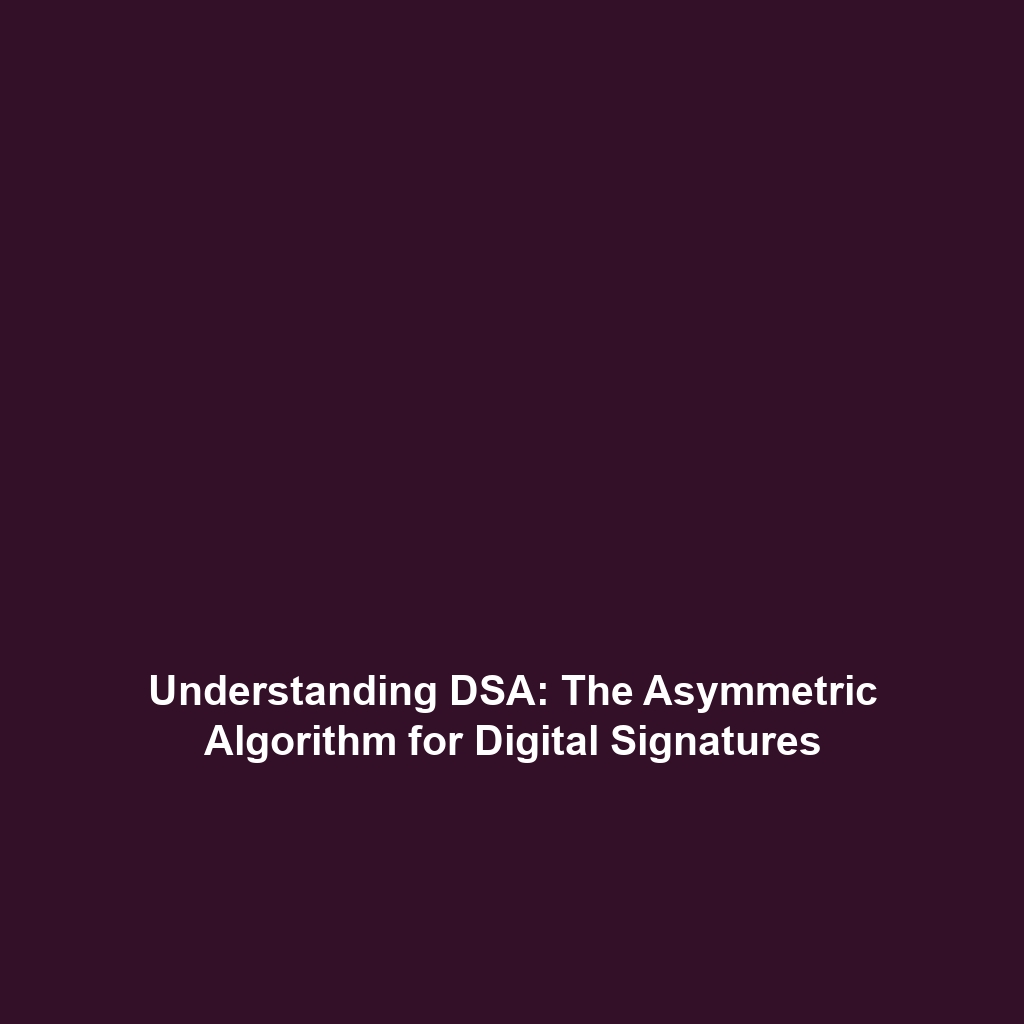<>
Understanding Symmetric Algorithms: Key Management in Cryptography
Introduction
Symmetric algorithms are a vital component in the realm of cryptography, utilizing the same key for both encryption and decryption. Their significance lies in the balance of efficient data protection and the critical nature of key management. As digital security threats continue to evolve, the secure management of cryptographic keys becomes paramount. This article delves into the principles, applications, challenges, and future developments associated with symmetric algorithms, underscoring their integral role in modern cryptographic practices.
Key Concepts
To fully understand symmetric algorithms, it’s essential to grasp the following major concepts:
Definition and Functionality
Symmetric algorithms involve a single key for both encrypting and decrypting data. Common examples include AES (Advanced Encryption Standard) and DES (Data Encryption Standard). Their efficiency makes them suitable for encrypting large amounts of data quickly.
Key Management Importance
Effective key management is crucial due to the following reasons:
- Security: If an unauthorized entity gains access to the key, they can easily decrypt sensitive information.
- Distribution: The secure distribution of keys to authorized users is necessary to maintain the confidentiality of the data.
- Lifecycle: Proper management of key generation, storage, usage, and destruction is vital for maintaining cryptographic integrity.
Applications and Real-World Uses
The practical applications of symmetric algorithms are widespread and impactful in various sectors. Some notable examples include:
- Data Encryption: Businesses often employ symmetric algorithms to encrypt data at rest and during transmission to safeguard sensitive information.
- Secure Communications: Email and messaging services use symmetric encryption to secure user communications against interception.
- Payment Systems: Credit card transactions utilize symmetric algorithms to ensure the security of financial data during processing.
These applications illustrate how symmetric algorithms are pivotal in maintaining security within the field of cryptography.
Current Challenges
Despite their effectiveness, symmetric algorithms face several challenges:
- Key Distribution: Safely distributing keys to users without compromise remains a significant challenge.
- Scalability: As organizations grow, managing keys for numerous users can become complex and prone to error.
- Regulatory Compliance: Organizations must ensure their key management practices comply with industry standards and regulations.
Addressing these challenges is crucial for the continued reliance on symmetric algorithms within cryptography.
Future Research and Innovations
Ongoing research and innovations in symmetric algorithms aim to enhance key management practices. Some anticipated developments include:
- Quantum-Resistant Algorithms: With the rise of quantum computing, researchers are exploring next-gen symmetric algorithms that can withstand quantum attacks.
- Automated Key Management Systems: Advances in AI and machine learning could lead to innovative solutions for automating key distribution and lifecycle management.
- Decentralized Key Management: Blockchain technology may offer new methods for securing key exchange and management.
These innovations represent a forward-thinking approach to enhancing security within the cryptography domain.
Conclusion
In summary, symmetric algorithms, which utilize the same key for both encryption and decryption, play a critical role in the broader field of cryptography. Effective key management is fundamental to leveraging their capabilities for secure data transmission and storage. As we look to the future, addressing current challenges and embracing innovative solutions will be essential for advancing the effectiveness of symmetric algorithms. For further reading, explore our pages on key management techniques and encryption standards.


